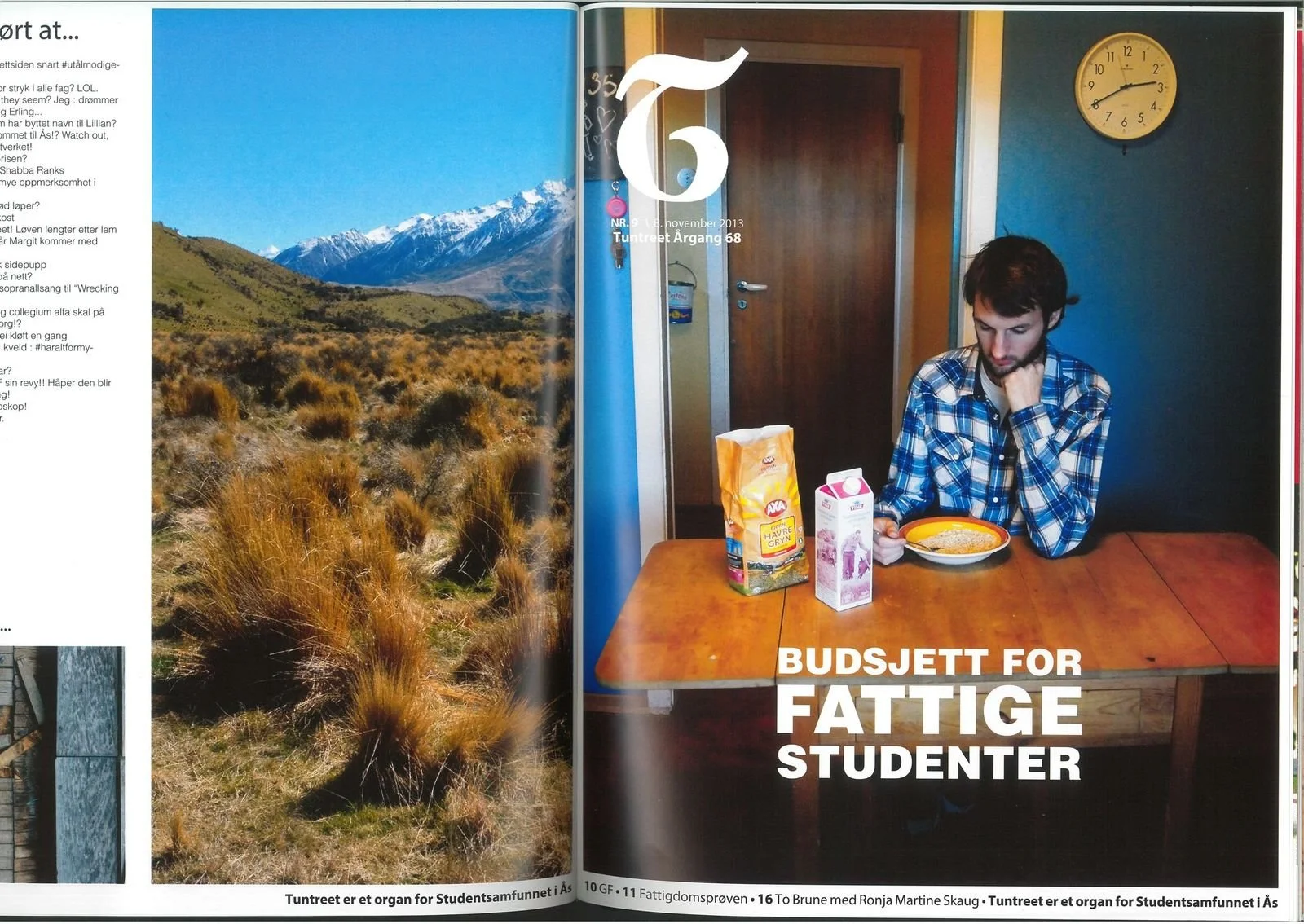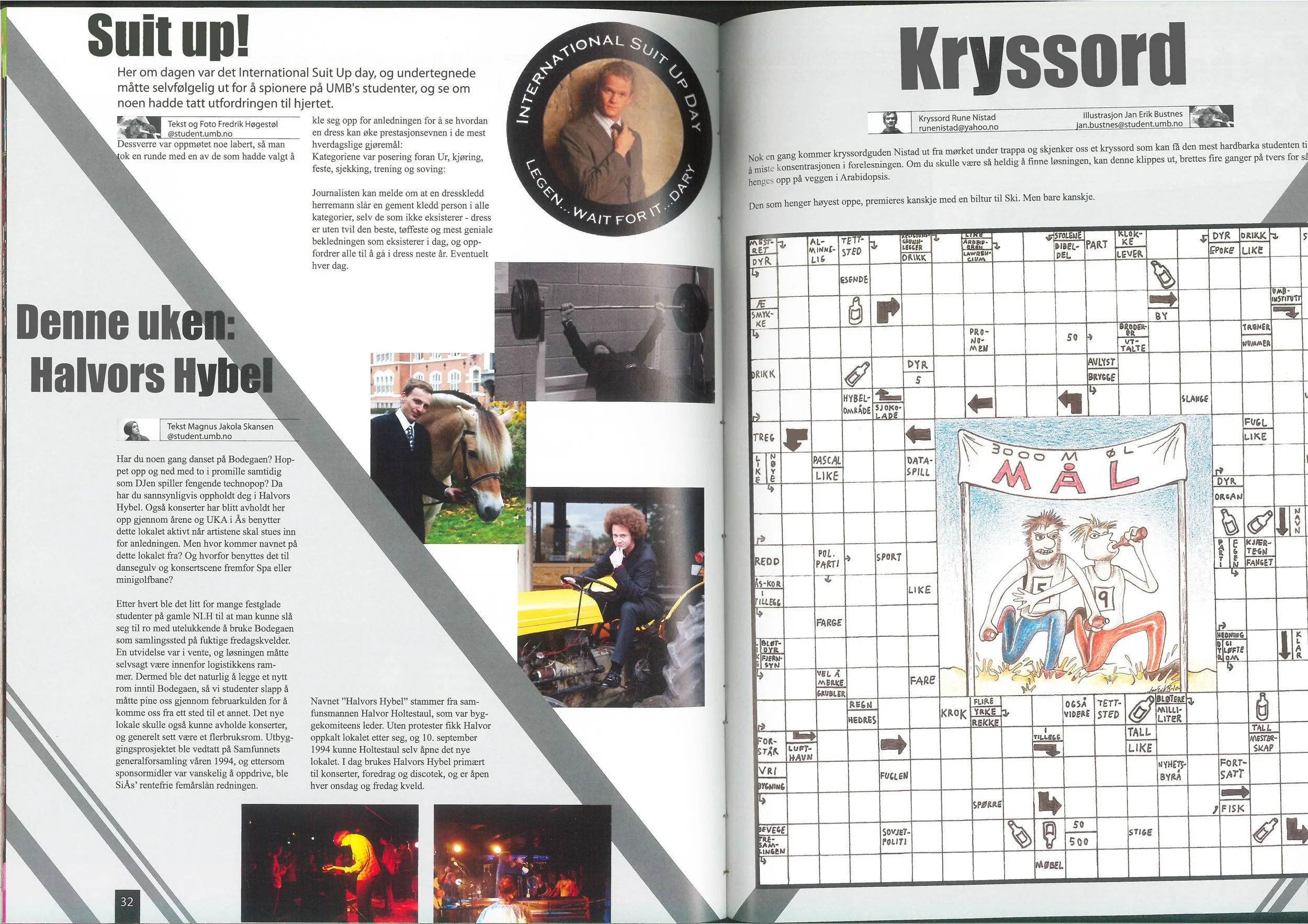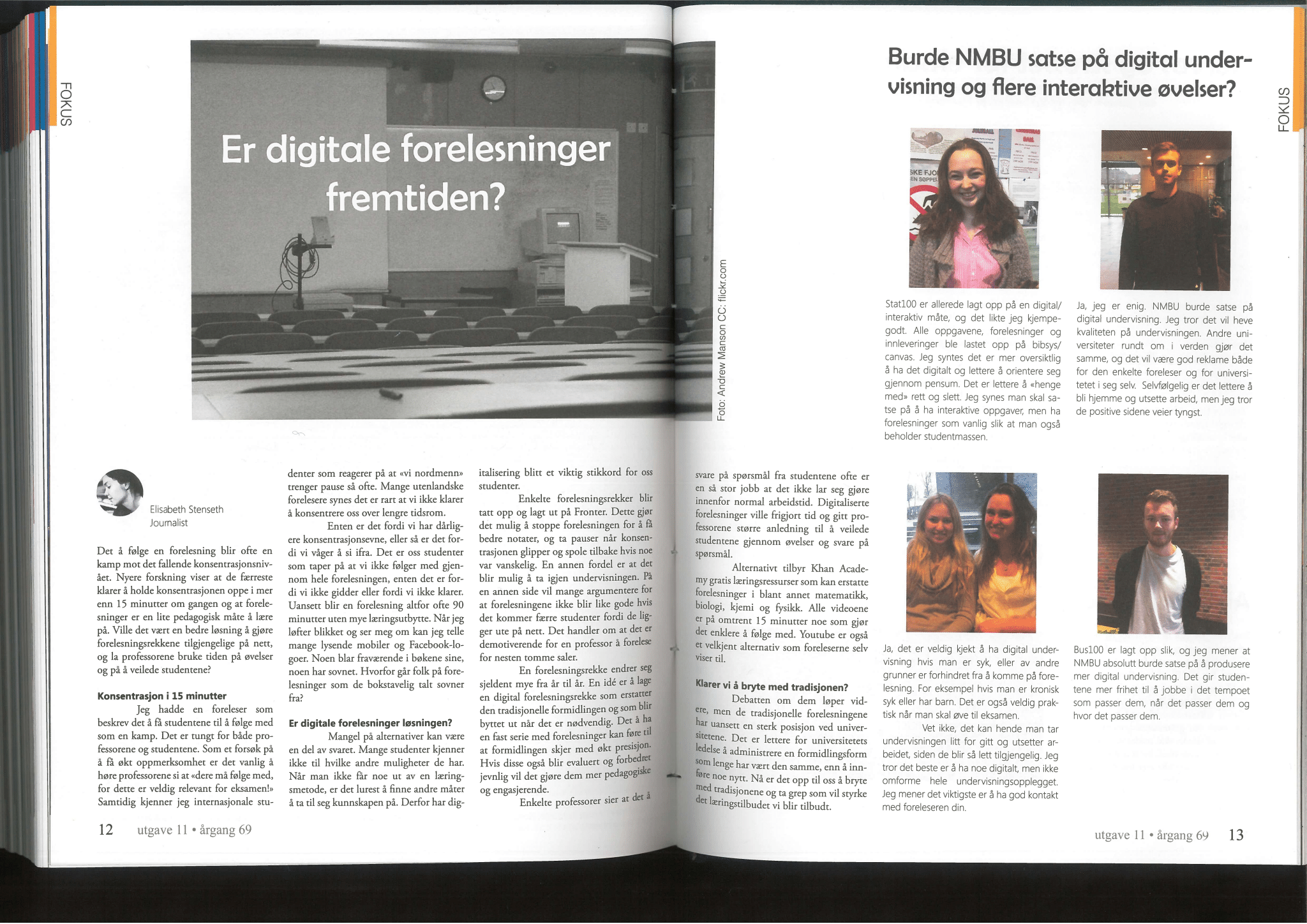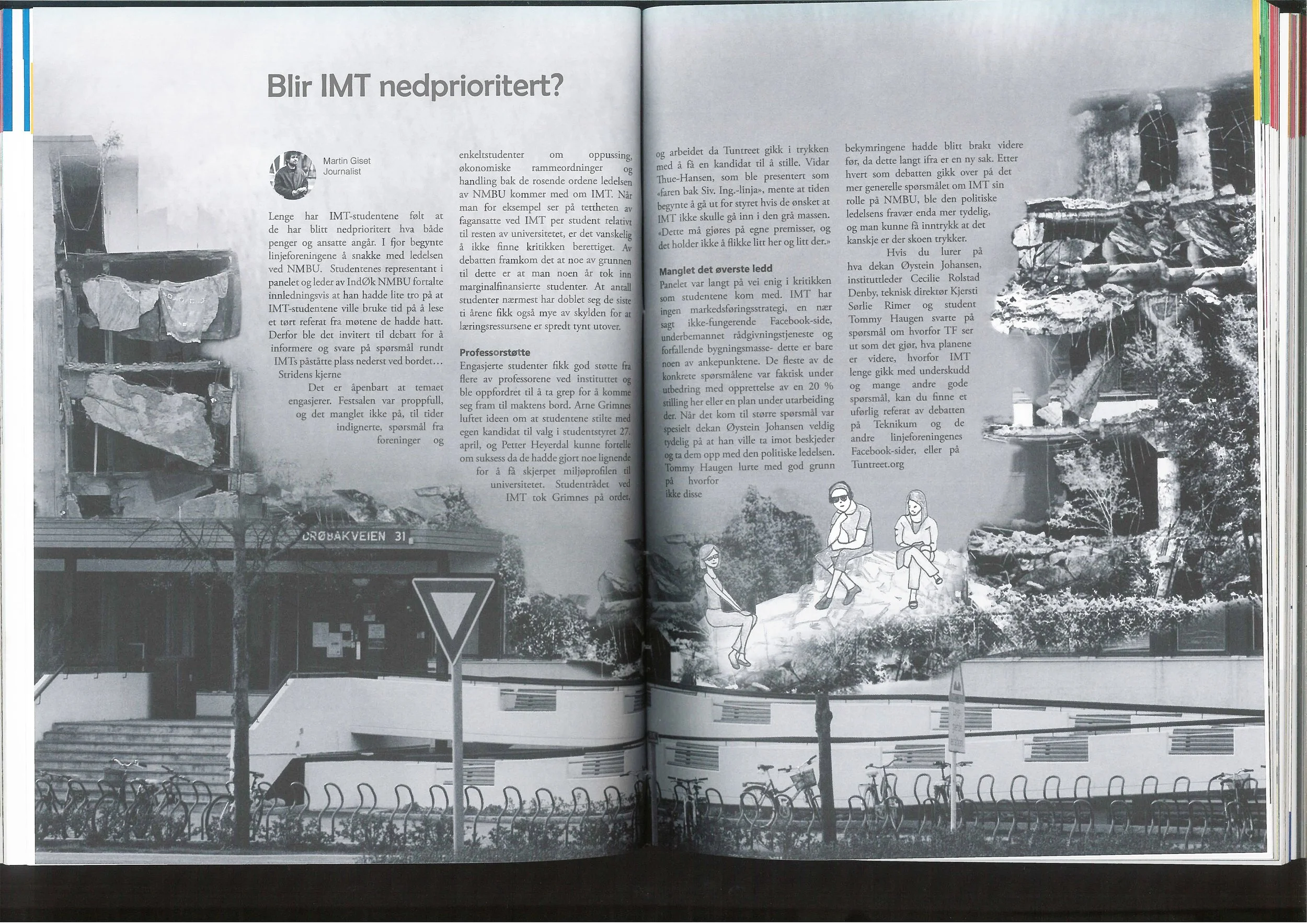Tuntreet Decade by Decade: The 10s
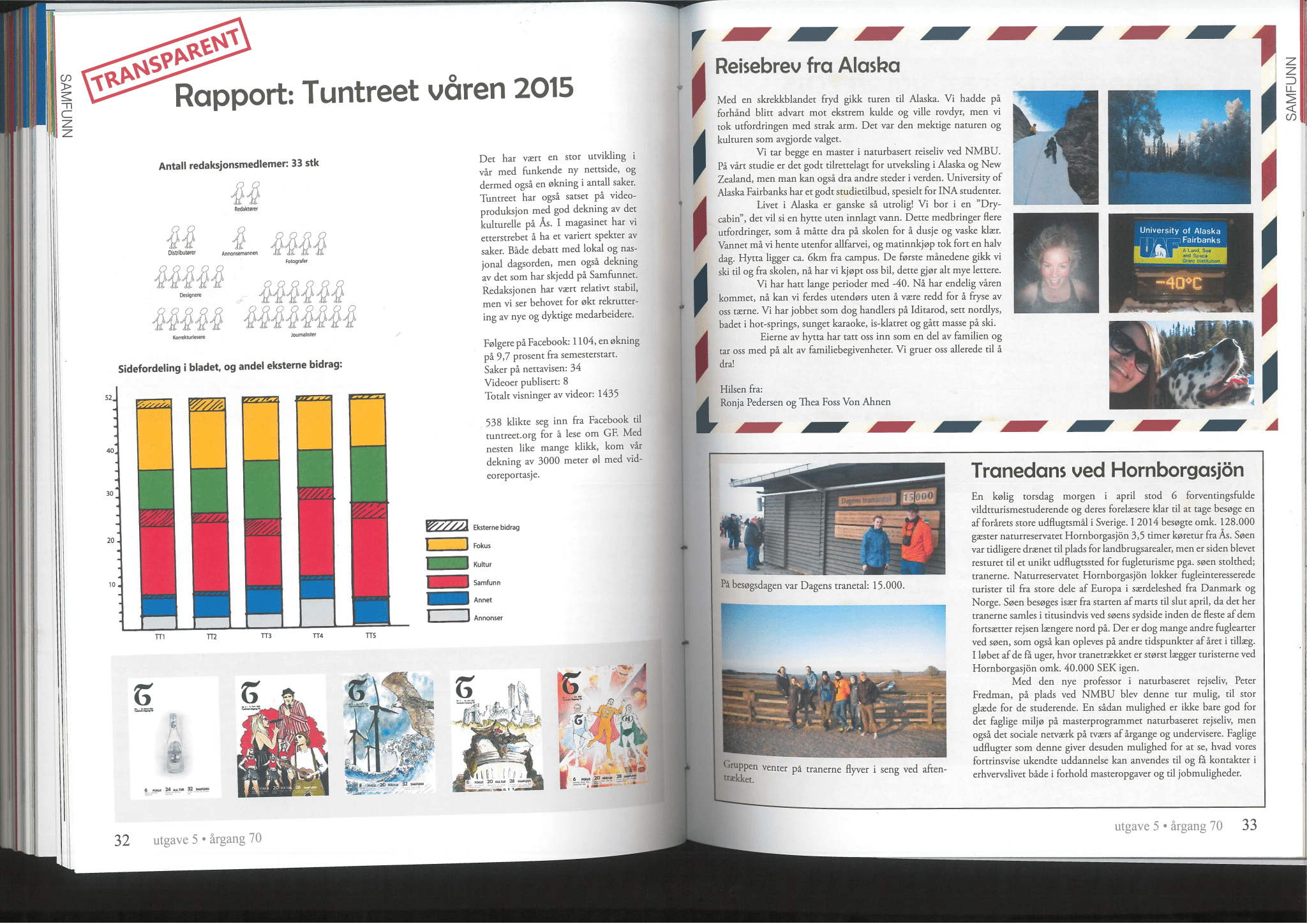
Tuntreet Decade by Decade: The 10s
Following the turbulent beginning of the new millennium, considering both the layout and the content, we have finally arrived at the 2010s. A pendulous decade. Where there is a reaction, there is a counter-reaction. For every editor who wishes to make a change, another will want to do the exact opposite. When someone aims to do something properly, someone else will want to do it in a silly manner. Let us have a closer look.
Journalist: Tord Kristian F. Andersen
The Tuntre Magazine
In the last edition, I mentioned how Tuntreet began to look more like a magazine throughout the 2000s. This becomes more and more pronounced in the 10s. In the first edition of 2011, the layout is changed once again. This time, it is evident that inspiration is taken from Dagbladet’s Magasinet. Later, in 2014, they grab their inspiration from A-magasinet.
Associations
Early in the 10s, the university was in a period of growth. The only associations back then were exclusive organizations and choirs. A minority of the student mass was admitted to these associations. In addition, the associations focused on niches that were not all that interesting to everyone. Åse Lund Bøe, editor for 12/13, remembers it all being a bit barring. That is why she was part of founding Koneklubben Freidig back in 2012. The spring of 2013, there was a lot of focus on the associations, both new and old. Yes, there is no getting around the fact that the associations took up a lot of room back then, both in Tuntreet and elsewhere.
Social Media
There was a period of time where Tuntreet felt a bit like a “party report”. Therefore, there were made more and more efforts into making the magazine feel more professional. The party content found its way to the internet and social media instead. Facebook and Instagram made their appearance, and Tuntreet was present on both, of course. Tuntreet even started including Instagram posts with #tuntreet in the magazine (you can still use this tag!).
A Three-Part Magazine
While talking about making the magazine more professional, it is worth mentioning that in 2014 they introduced a three-part sectioning of the magazine. These three sections were Focus, Culture and Society. Focus can be compared with the old, themed editions of the 80s, but took up a smaller part of the magazine. Culture discussed the more cultural parts of Samfunnet, like revue reviews. Society is described by editor at the time, Tord Eirik Feldt Enger, as “old Tuntreet”, in other words what Tuntreet had been like until the new structure was introduced. Back then, the layout was minimal, with lots of space given to large pictures.
History
In 2014, Samfunnet was 150 years old. For the occasion, a second volume of “Ås-students through 100 years” was released, called “Ås-students through 150 years”. At the time of this publication, several historical articles and timelines got included in Tuntreet. Furthermore, Tuntreet celebrated its 70-year anniversary in 2016, and the history of Tuntreet itself was given more attention. “From the archive”, which used to only be seen from time to time, became a more or less fixed feature for a period.
A More Silly Magazine
The sectioning is removed in 2016, and a lot of the seriousness disappears. That is not to say that the content from the sections disappears, but it gets more randomly distributed. In many ways, it was a way to make the magazine feel more casual. The large pictures still remain, but other than that the layout changes a lot; from the stylish look to something more playful. What used to be considered a pretty serious magazine has now become a mix of the serious and the super silly. It did face some criticism at times, which was countered with an edition of Tun & Tre (read more in TT04).
An Ås-Magazine for Åslings!
Among the most notable changes of this decade is the coverage being more about the internal happenings rather than the outside. With the internet it is possible to reach more people, even outside of Ås, about whatever you are passionate about. This challenged Tuntreet’s role in the student involvement. Julie Westergaard Karlsen, editor in 2018, tells us that this can explain all the Ås-specific content. This made it possible to narrow down the scope of things, and rather be a fun source of entertainment at the reading halls. As written in Lars Raaen’s candidacy before he was elected editor in the spring of 2015: “In the coming year, the magazine will be an Organ for Studentsamfunnet in Ås and not a university newspaper!”
Fixed Features
The “Clubs and associations-column” becomes more of a general submission column, but due to an overwhelming amount of association-talk it is renamed to “association-talk” in 2015. Erotic short stories become a regular feature, which even today reappear regularly. In 2017, TT-tabu sees the light of day. This is a feature that takes up several pages, diving into subjects that are not spoken about a lot, but people may think about in their lives. TT-tabu was featured regularly until 2020, but has since showed up a little less often.
(Student) Politics
A lot of student politics were discussed. Short reports from the Student Parliament meetings were presented more than they used to. The Student Democracy was closed down and re-founded on the same night in November 2013, this time with some structural changes and with VET on board. The Student Board was renamed the Working Committee of the Student Parliament (AU). However, the students themselves rarely participated in the student politics debates. In broader context, it’s worth mentioning that the climate debate would occupy the students on a large scale. For the time being, without “vegonorm“ at Samfunnet.
English Edition
Earlier, shorter versions of articles were translated and published on separate pages. Some journalists even wrote in English. By the end of the decade, all of this is improved upon, heavily. The fall of 2017 witnessed a pilot project: the translation of the entire magazine. Editor-in-Chief back then, Margit Fausko, remembers the first time this was done, and how the layout-weekend was a long-lasting event. After the layout for the Norwegian edition was finished, all text had to be replaced with the translation. They stayed up until 7 in the morning before they could submit both versions for printing. Since then, the English edition has been pieced together the day after. The pilot was a success, Tuntreet was provided more support from NMBU, and since 2018 every single edition of Tuntreet has been translated.
And with that, we have made our way through the entirety of Tuntreet’s history. We are only two years into the current decade, so one might suggest that there is no reason to cover these years. I am going to cover this last part anyways: The history of Tuntreet during Corona. Tune in next time, for the last time.

